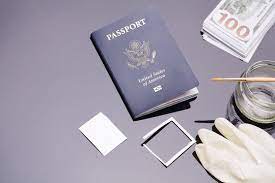Passports serve as the gateway to the world, facilitating portugese id card travel and serving as a vital identity document. However, with globalization and technological advancements, the proliferation of fake passports has become a pressing concern. In this article, we delve into the intricate world of fake and authentic passports, exploring the differences, the consequences of counterfeiting, and measures to combat this illicit practice.
Understanding Fake Passports: Fake passports, also known as counterfeit passports, are fabricated documents designed to mimic the appearance and information of authentic passports. These documents are often created using sophisticated printing techniques, high-quality materials, and advanced forgery methods. From altering personal information to falsifying security features, counterfeiters employ various tactics to produce convincing replicas.
Distinguishing Fake from Real: Despite the sophistication of counterfeit passports, several indicators can help distinguish them from genuine ones. Authentic passports typically feature complex security elements, including holograms, watermarks, and special inks, which are challenging to replicate accurately. Additionally, official passports incorporate advanced biometric technologies, such as embedded microchips and digital photos, to enhance security and prevent tampering.
Consequences of Fake Passports: The use of fake passports poses significant risks and consequences for individuals, governments, and global security. For travelers, possessing a counterfeit passport can lead to detention, deportation, and travel restrictions, jeopardizing their freedom and future travel prospects. Moreover, counterfeit passports enable criminals to engage in various illicit activities, including human trafficking, drug smuggling, and terrorism, threatening public safety and national security.
Combatting Passport Fraud: To combat the proliferation of fake passports, governments and international organizations have implemented stringent security measures and collaboration efforts. Enhanced document authentication technologies, such as biometric verification systems and document scanners, are deployed at border checkpoints and immigration control points to detect counterfeit passports accurately. Furthermore, intergovernmental initiatives, information sharing networks, and law enforcement cooperation play a crucial role in identifying and apprehending counterfeiters.
Conclusion: The prevalence of fake passports portugese id card poses a significant challenge to global security and travel integrity. By understanding the differences between fake and authentic passports, recognizing counterfeit indicators, and implementing robust security measures, governments and travelers can mitigate the risks associated with passport fraud. Together, collective efforts are essential to safeguarding the integrity of passports and maintaining the trust and security of international travel.




